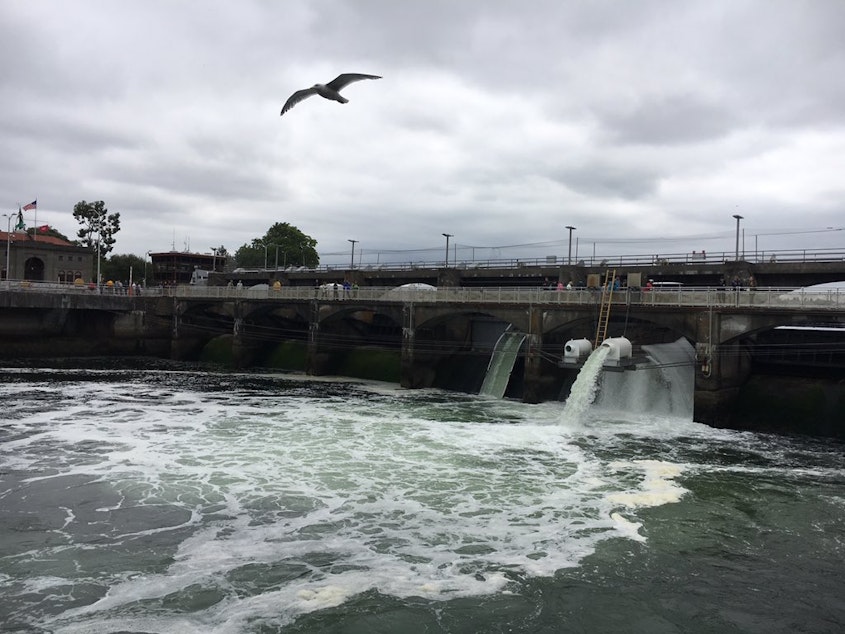Seattle's ship canal project will cost $150 million more than expected

Seattle and King County will have to pay tens of millions of dollars more than expected for their major utility project. The two governments are building a tunnel and new storage tanks from Ballard to Wallingford to hold sewage and storm water.
Seattle Public Utilities officials said the estimated costs have increased by about $150 million. That's because of inflation and construction costs — and because SPU resized the tunnel design to accommodate more rainfall as the climate changes.
"Recent rainfall modeling had indicated that we needed a larger tunnel volume," SPU’s Project Executive Keith Ward explained to city council members this week. We made a decision to double the capacity of the tunnel almost … but it did add about a $25 million cost increase."
The expected cost is now about $570 million dollars total, up from projections around $420 million in 2014. Seattle will pay the bulk of the cost, in large part from customer utility payments, and King County will cover the remaining 35-percent.
"Clearly when you talk about the scale of this project and being able to double the capacity for an additional $25 million, it's much more cost effective to build more capacity now than to come back 20 years from now and build a new tunnel somewhere," City Council member Mike O'Brien.
Sponsored
The tunnel and new tanks will keep combined sewer overflow from entering the Ship Canal, which otherwise can contaminate water, marine life and shores. Once the tunnel is finished, officials expect contaminated water will overflow into the Ship Canal once a year. It's happening more than 100 times a year now.
The project is part of Seattle’s commitment to fulfill a Consent Decree with state and federal agencies. The Environmental Protection Agency, Department of Justice and the Washington State Department of Ecology require the city to reduce sanitary sewer overflows and combined sewer overflows into Seattle’s waterways.
Construction is scheduled to start this year and be complete by 2026.

